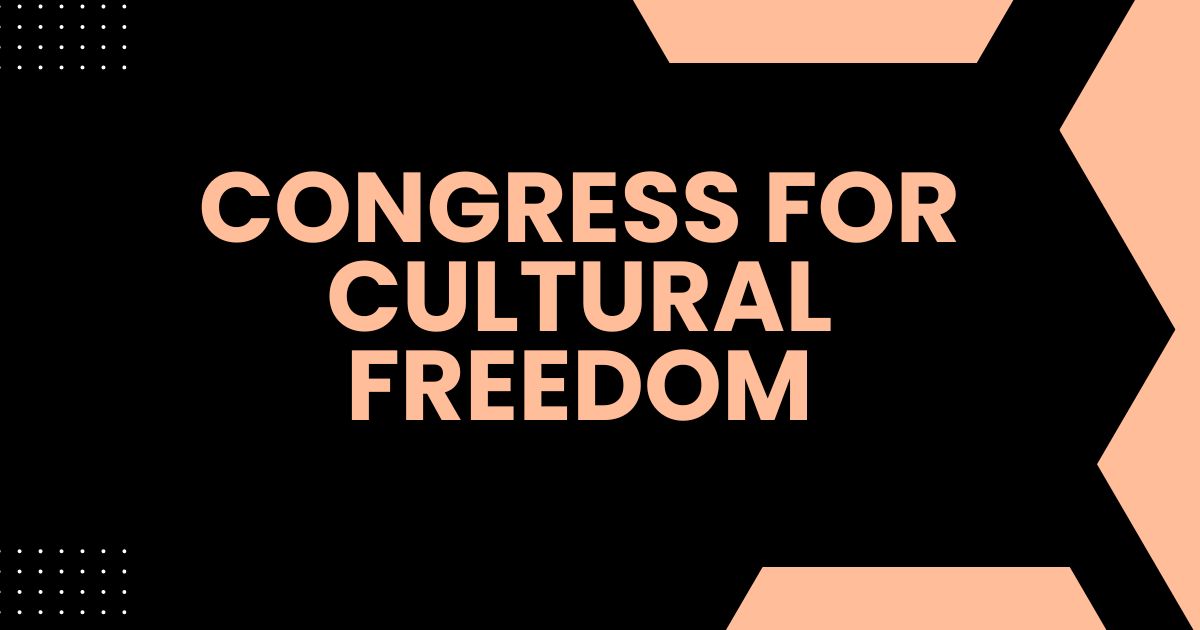The Congress for Cultural Freedom (CCF) emerged in 1950, right in the middle of the Cold War. It was a powerful intellectual organization created to rally thinkers, artists, and writers against totalitarian ideologies—especially Soviet communism. At its core, the CCF aimed to promote freedom of expression, liberal democracy, and anti-communist ideals through culture and art.
Origins in the Tensions of the Cold War
The Cold War was more than a battle of nuclear stockpiles—it was a clash of ideologies. The Soviet Union’s promotion of communism through propaganda and cultural dominance was seen as a threat by Western powers. In response, the U.S. wanted to counteract this influence not with bullets, but with books, debates, and artistic expression. That’s where the CCF came in.
The Role of the CIA in Supporting CCF
One of the most controversial aspects of the Congress for Cultural Freedom was its secret funding from the Central Intelligence Agency (CIA). Though the organization presented itself as independent, it was actually part of the CIA’s broader psychological operations. The idea was to quietly fund intellectuals who could counter communist ideologies without making it look like state propaganda.
Promoting Intellectual Freedom Through Debate
Despite its covert backing, the CCF became a genuine platform for diverse thinkers. It organized conferences, published journals, and sponsored lectures around the globe. Intellectuals from all political backgrounds debated the meaning of freedom, the role of government, and the future of global culture. In this way, it became a sort of think tank that influenced both politics and philosophy.
The Influence of CCF on Literature and Art
The Congress had a massive impact on literature, art, and music. It supported authors like George Orwell and Arthur Koestler, whose works challenged the moral claims of communism. It also sponsored exhibitions of abstract expressionist art, which became symbolic of Western freedom compared to Soviet realism, which was rigid and state-controlled.
Magazines and Publications Backed by CCF
One of the most powerful tools of the CCF was its publishing arm. It supported more than 20 major cultural magazines, including Encounter in Britain, Preuves in France, and Der Monat in Germany. These publications featured essays, critiques, poetry, and political analysis—all geared toward shaping public opinion in favor of democratic ideals.
Global Reach of the Organization
The Congress for Cultural Freedom was not just a Western effort. It spread its influence across continents, establishing chapters and funding cultural activities in Asia, Africa, and Latin America. This was strategic—it was about winning the hearts and minds of intellectuals in developing countries before Soviet ideology could take root there.
Prominent Figures Associated with CCF
Many well-known thinkers and writers of the 20th century were linked to the CCF. People like Isaiah Berlin, Hannah Arendt, Bertrand Russell, and Raymond Aron were either involved in or influenced by the Congress. Their writings—sometimes directly published through CCF-backed journals—helped shape Cold War discourse and defend liberal values.
Scandals and Exposure of CIA Involvement
In 1967, a bombshell report by Ramparts magazine exposed the CIA’s covert funding of the CCF. The revelation caused outrage. Many intellectuals felt betrayed, arguing that even if their work wasn’t censored, the association tainted the authenticity of their efforts. The exposure led to major resignations and the restructuring of the organization.
Transformation into the International Association for Cultural Freedom
After the CIA scandal broke, the CCF attempted to restore credibility. It rebranded as the International Association for Cultural Freedom in 1969, distancing itself from its controversial past. However, the damage had been done. Though it continued in a limited form for a while, its influence steadily declined in the years that followed.
Legacy of the Congress for Cultural Freedom
Despite the scandal, the legacy of the Congress for Cultural Freedom is complex and enduring. It helped popularize liberal democratic ideals and gave a platform to many prominent voices. It showed how culture and politics are deeply intertwined and how art can be used not just for beauty, but as a strategic weapon in ideological conflict.
Cultural Warfare as a Cold War Strategy
The CCF exemplified how cultural influence became a key battlefield during the Cold War. It wasn’t just about winning wars or signing treaties—it was about shaping the way people thought. The Soviets promoted state-controlled art and literature, while the West, through efforts like the CCF, championed creativity and freedom—even if it was secretly orchestrated.
Criticism from the Intellectual Community
Not everyone saw the CCF in a positive light. Critics argued that its efforts, while well-intentioned, represented a form of soft imperialism. They claimed the U.S. was just as manipulative as the USSR, using culture to push its agenda. Others said that real intellectual freedom cannot exist if it’s being secretly funded and guided by intelligence agencies.
Lessons for Modern Cultural Diplomacy
The story of the CCF offers critical lessons for today’s world, where propaganda, misinformation, and ideological battles continue across digital platforms. It reminds us that cultural influence can be more effective than military power and that transparency is crucial in building trust—especially in intellectual and artistic communities.
Revival of Interest in the CCF Today
In recent years, scholars and historians have revisited the Congress for Cultural Freedom, analyzing it through a more nuanced lens. While its CIA roots are troubling, its impact on intellectual thought and its contributions to fighting authoritarian ideologies are undeniable. This duality continues to fascinate researchers, activists, and artists alike.
Conclusion
The Congress for Cultural Freedom was one of the most ambitious and controversial cultural initiatives of the Cold War era. Born out of fear of communist influence, it aimed to shape global thought through literature, art, and debate. Though its legacy is stained by secrecy and scandal, its influence on 20th-century intellectual history remains significant. It stands as a testament to the power of ideas—and the hidden forces that sometimes guide them.
FAQs
What was the main goal of the Congress for Cultural Freedom?
The CCF aimed to promote liberal democratic values and counter communist ideology through cultural initiatives like publishing, conferences, and exhibitions.
Who secretly funded the Congress for Cultural Freedom?
The CIA secretly funded the organization as part of its Cold War psychological operations, although this was not publicly known until 1967.
Did the CCF influence literature and art?
Yes, the CCF had a profound impact by supporting artists, writers, and thinkers who championed freedom of expression and modernist aesthetics.
What happened to the CCF after the CIA involvement was revealed?
The organization rebranded as the International Association for Cultural Freedom but lost much of its credibility and influence afterward.
Why is the CCF still relevant today?
It offers lessons on how cultural diplomacy can shape ideologies, the risks of covert influence, and the enduring power of intellectual freedom.











